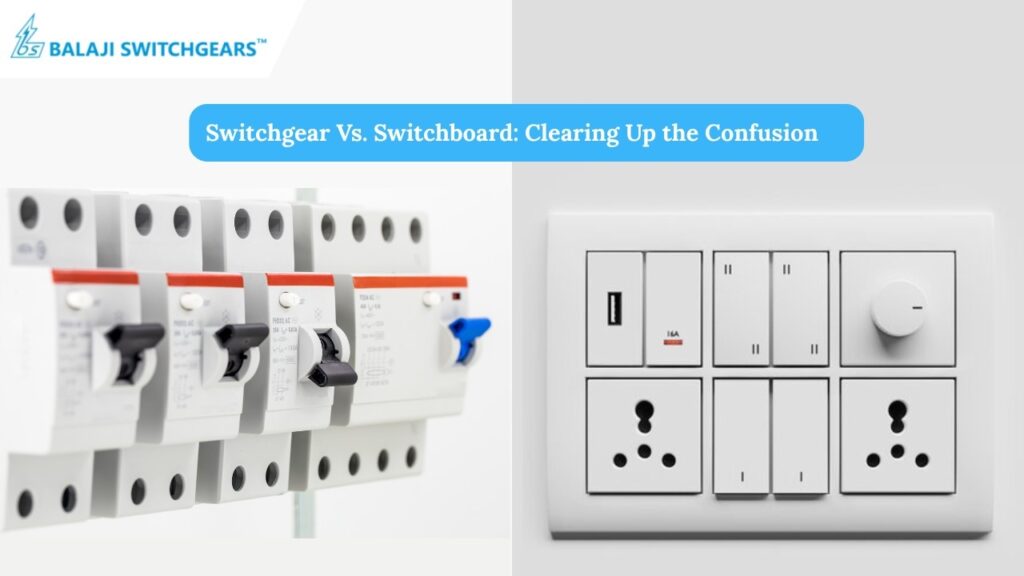In the world of electrical systems and power distribution, two terms that often confuse are Switchgear and Switchboard. While they may seem similar at a glance — both are used to control, protect, and isolate electrical equipment — they serve different purposes and are built for different scales and complexities of power management. Whether you’re managing a commercial facility, industrial plant, or planning an electrical infrastructure upgrade, understanding the distinction between these two is essential.
Let’s break down the differences, applications, and why choosing the right one is critical for safety, efficiency, and long-term performance.
What is a Switchboard?
A Switchboard is a power distribution unit that directs electricity from one or more sources of supply to several smaller regions of usage. It typically includes circuit breakers, fuses, switches, and meters that distribute electricity to various parts of a building or system.
Switchboards are commonly found in commercial and residential buildings. They are simpler in construction, and primarily designed for low voltage distribution (generally below 600V). Their purpose is to control and distribute power safely, but they offer limited protection and automation features compared to advanced systems.
Typical applications of switchboards include:
- Office buildings
- Small commercial facilities
- Educational institutions
- Retail outlets
What is Switchgear?
On the other hand, Switchgear is a much broader term that includes a combination of disconnect switches, fuses, and circuit breakers used to control, protect, and isolate electrical equipment. It is more advanced and is used in high or low voltage power systems — especially where the demands on protection and control are higher.
A key feature of Switchgear is its ability to detect faults and disconnect power supply in milliseconds to prevent equipment damage or safety hazards. It’s built to endure and operate in demanding industrial environments, making it a critical component of substations and heavy-duty power systems.
Applications of switchgear:
- Manufacturing plants
- Power generation units
- Data centers
- Large commercial and industrial buildings
Key Differences Between Switchgear and Switchboard
Let’s simplify the comparison between Switchgear and Switchboard into specific categories:
| Feature | Switchboard | Switchgear |
| Voltage Range | Low voltage only (up to 600V) | Low, medium, and high voltage |
| Protection | Basic (fuses, breakers) | Advanced (relay-based protection, automation) |
| Usage | Distribution of power | Control, protection, and isolation |
| Components | Breakers, switches, meters | Breakers, relays, current transformers, disconnectors |
| Safety | Moderate | High (arc-flash protection, isolation capabilities) |
| Environment | Clean, dry spaces | Industrial, outdoor, harsh environments |
Why the Confusion?
The confusion often arises because the two systems are sometimes used together in one facility. For example, a power system might use Schneider Electric Switchgear at the incoming end to manage high-voltage input and protection, and then distribute the power using switchboards within the premises.
Additionally, manufacturers often use the terms interchangeably in marketing or product literature, which can be misleading for those who aren’t deeply familiar with electrical engineering.
The Role of Low Voltage Switchgear in Modern Infrastructure
One of the emerging trends in power distribution is the use of low voltage switchgear — a hybrid solution that brings advanced protection and control features typically found in high-voltage systems, but for low-voltage applications. These are especially popular in data centers, hospitals, and high-demand commercial buildings, where downtime and safety are critical concerns.
Brands like Schneider Electric offer modular, intelligent low voltage switchgear solutions that are IoT-enabled, support real-time monitoring, and are built for smart grids and digital power management.
Which One Do You Need?
Choosing between a switchboard and switchgear depends on your application, load demands, environmental conditions, and safety requirements.
You may need switchgear if:
- Your facility handles high electrical loads or medium/high voltages.
- You require real-time fault protection and automation.
- Your setup is mission-critical and safety is non-negotiable.
You may opt for switchboards if:
- You’re distributing standard low-voltage power in a commercial or residential setting.
- The application is non-complex and doesn’t demand advanced protection.
- Cost-efficiency and compact design are top priorities.
Final Thoughts
Understanding the distinction between Switchgear and Switchboard isn’t just technical — it’s practical. Making the right choice impacts operational efficiency, worker safety, future scalability, and overall system reliability. As industries adopt smarter and more digital power systems, the role of low voltage switchgear is becoming increasingly important.
Investing in modern switchgear solutions from reputed brands like Schneider Electric can make all the difference for businesses that need more than just basic power distribution — whether for industrial automation, energy management, or mission-critical systems.
Conclusion: The Balaji Switchgears Advantage
At Balaji Switchgears, we specialize in guiding businesses through the complexities of modern electrical infrastructure. Whether you’re looking for Schneider Electric Switchgear, intelligent low-voltage switchgear, or traditional switchboards, our team of experts ensures that you get reliable, future-ready solutions that align with your specific needs.
We combine decades of industry experience with cutting-edge technology to deliver safety, performance, and peace of mind — all under one trusted name.
Balaji Switchgears — Powering progress with precision.

